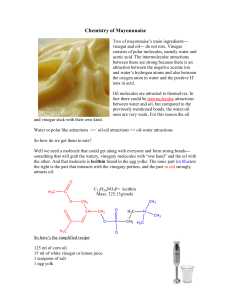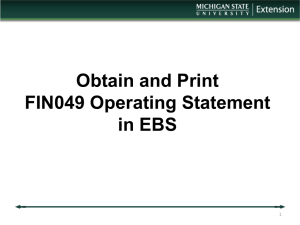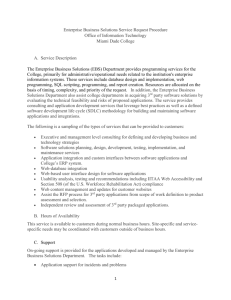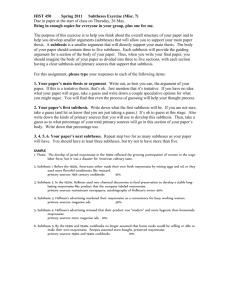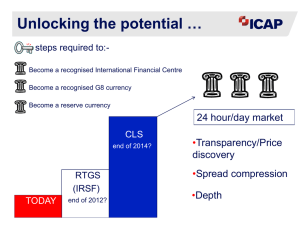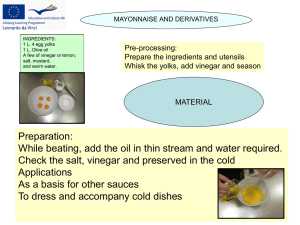Batch Production OF MAYONN AISE AND KE TCHUP
advertisement
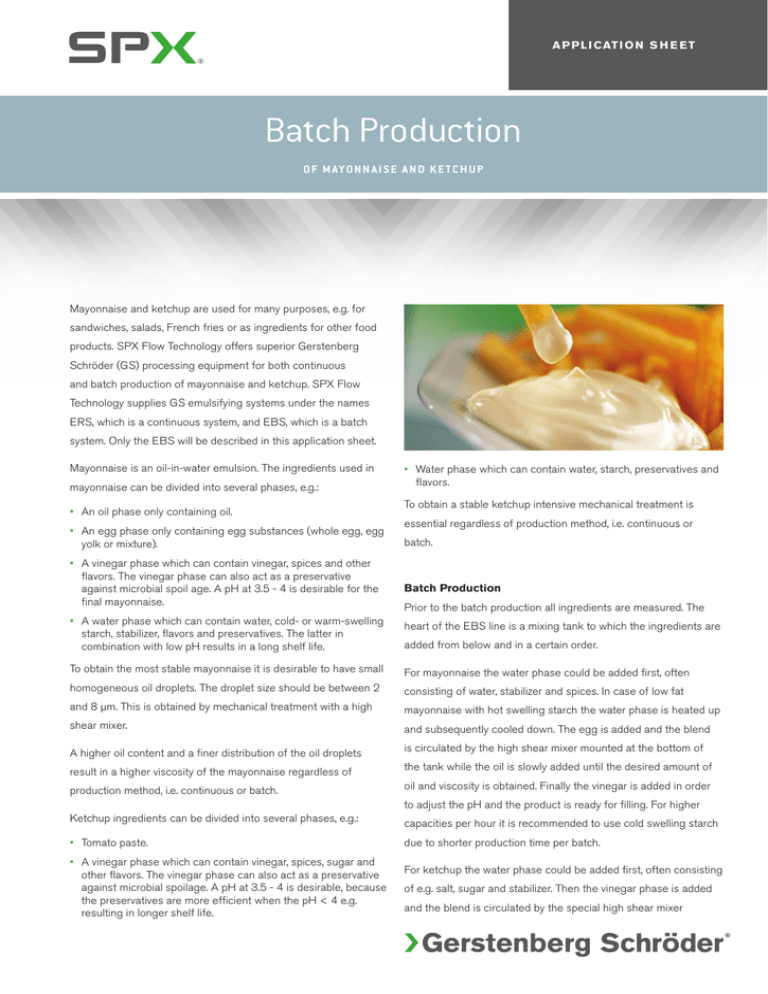
A P P L I CAT I O N S H E E T Batch Production O F M AY O N N A I S E A N D K E T C H U P Mayonnaise and ketchup are used for many purposes, e.g. for sandwiches, salads, French fries or as ingredients for other food products. SPX Flow Technology offers superior Gerstenberg Schröder (GS) processing equipment for both continuous and batch production of mayonnaise and ketchup. SPX Flow Technology supplies GS emulsifying systems under the names ERS, which is a continuous system, and EBS, which is a batch system. Only the EBS will be described in this application sheet. Mayonnaise is an oil-in-water emulsion. The ingredients used in mayonnaise can be divided into several phases, e.g.: • An oil phase only containing oil. • An egg phase only containing egg substances (whole egg, egg yolk or mixture). • A vinegar phase which can contain vinegar, spices and other flavors. The vinegar phase can also act as a preservative against microbial spoil age. A pH at 3.5 - 4 is desirable for the final mayonnaise. • Water phase which can contain water, starch, preservatives and flavors. To obtain a stable ketchup intensive mechanical treatment is essential regardless of production method, i.e. continuous or batch. Batch Production Prior to the batch production all ingredients are measured. The • A water phase which can contain water, cold- or warm-swelling starch, stabilizer, flavors and preservatives. The latter in combination with low pH results in a long shelf life. heart of the EBS line is a mixing tank to which the ingredients are To obtain the most stable mayonnaise it is desirable to have small For mayonnaise the water phase could be added first, often homogeneous oil droplets. The droplet size should be between 2 consisting of water, stabilizer and spices. In case of low fat and 8 µm. This is obtained by mechanical treatment with a high mayonnaise with hot swelling starch the water phase is heated up shear mixer. and subsequently cooled down. The egg is added and the blend A higher oil content and a finer distribution of the oil droplets is circulated by the high shear mixer mounted at the bottom of result in a higher viscosity of the mayonnaise regardless of the tank while the oil is slowly added until the desired amount of production method, i.e. continuous or batch. oil and viscosity is obtained. Finally the vinegar is added in order Ketchup ingredients can be divided into several phases, e.g.: • Tomato paste. • A vinegar phase which can contain vinegar, spices, sugar and other flavors. The vinegar phase can also act as a preservative against microbial spoilage. A pH at 3.5 - 4 is desirable, because the preservatives are more efficient when the pH < 4 e.g. resulting in longer shelf life. added from below and in a certain order. to adjust the pH and the product is ready for filling. For higher capacities per hour it is recommended to use cold swelling starch due to shorter production time per batch. For ketchup the water phase could be added first, often consisting of e.g. salt, sugar and stabilizer. Then the vinegar phase is added and the blend is circulated by the special high shear mixer mounted at the bottom of the tank for superior mixing while the tomato paste is slowly added. After mixing the product is heated up for a certain time. The temperature profile depends on the used ingredients. In order to avoid a high number of heat resistant micro organisms in the product, it is recommendable to heat the product up to 100°C for about 8 minutes. The final viscosity of the product depends on the recipe and the heat treatment. The EBS can be incorporated in any new or existing product line and the control panel can be delivered as a manually controlled or as an automatically controlled panel. A vacuum function in the process tank ensures no air in the final product. Vacuum The EBS processing system ensures a stable emulsion and a short production time. The equipment is suitable for both hot and Cooling water cold processing. The hot process is required when using warmswelling starch for the production of a low fat mayonnaise. Cooling water Ingredients The EBS production offers low waste and quick changeover from one recipe to another due to minimal product volume in the EBS as well as short cleaning time. Fig. 1: EBS principle process Water Manual ingredients Steam Condensate Water/starch phase preparation Oil Cooling and/or heating Egg yolk and vinegar Funnel Final product Batch machine type EBS Fig. 2: An example of a mayonnaise process with separate water/starch phase preparation Other Advantages of the EBS • Hygienic and robust design: Meets the requirements for the food industry and occupies minimum floor space • Indirect thermal treatment: For the heating process when hot swelling starch is used for production of low fat mayonnaise • Vacuum production: No air in the final product • Easy to operate: Easy operation of the plant with the control panel • High shear mixer: Short production time • Cost saving: Minimal product waste compared with continuous production Denmark: P: +45 7027 8222 F: +45 7027 8223 E: gs.dk.sales@spx.com Germany: P: +49 451 3709 0 F: +49 451 3709 311 E: gs.de.sales@spx.com For more information about our worldwide locations, approvals, certifications, and local representatives, please visit www.spx.com. SPX Corporation reserves the right to incorporate our latest design and material changes without notice or obligation. Design features, materials of construction and dimensional data, as described in this bulletin, are provided for your information only and should not be relied upon unless confirmed in writing. ISSUED 07/2012 A4_GB COPYRIGHT © 2012 SPX Corporation
